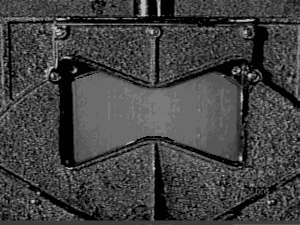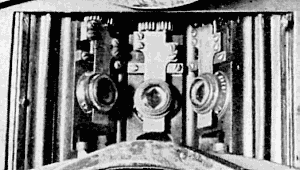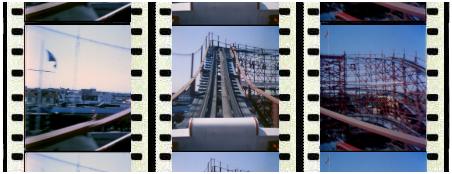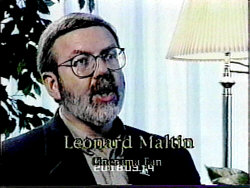Evolving first from an array of eleven 16mm cameras to Vitarama's battery of five 35mm cameras, Cinerama used a single camera that integrated three 35mm film movements and lens sets behind a giant disc shutter that ensured that all three images were exposed at exactly the same time and for exactly the same length of time.
Waller's three eyed monster focused its images through three carefully matched special 27mm lenses custom made by Eastman Kodak in Rochester, New York. A system of gears allowed their irises and focus to be adjusted simultaneously. The right lens photographed the left third of the total image, the middle lens photographed the center, and the left lens photographed the right third.
Seen at right is the single shutter disc spinning in front of the three tiny Cinerama camera lenses. (Considerably slowed down for this illustration) |  |
 |

Each of the three films recorded an image covering 50° horizontally and 55° vertically. Each panel overlapped its neighbor by 2°, yielding a total image covering 146° by 55°. Rather than using a frame measuring four perforations high, Cinerama panels were six perforations high. Overall, Cinerama used 600% more image area than our conventional 35mm so-called wide screen films. The quality optics and enormous image area created a startlingly sharp, well defined image.

Hear Leonard Maltin's Comments On The Image
Streaming RealAudio.







